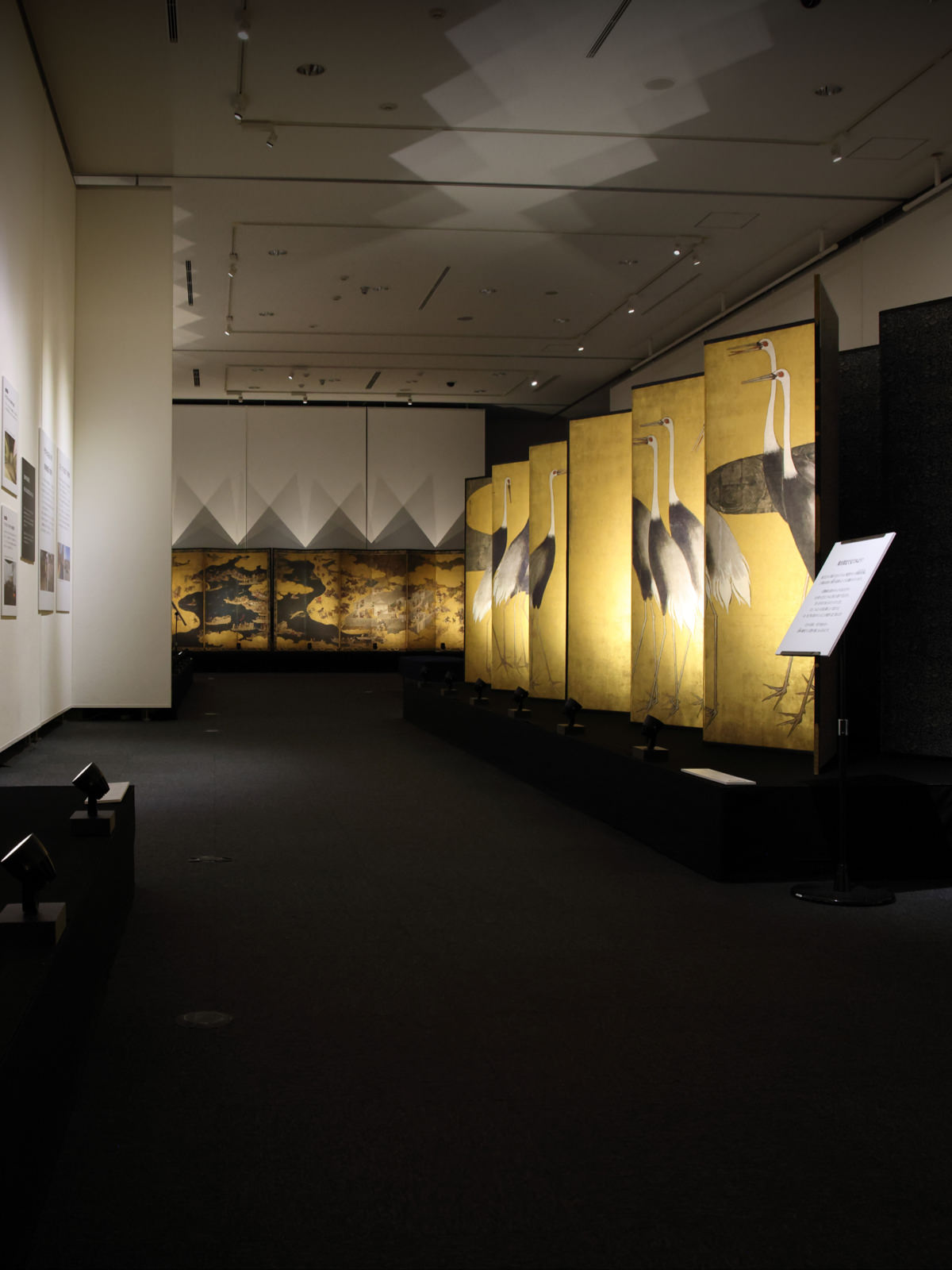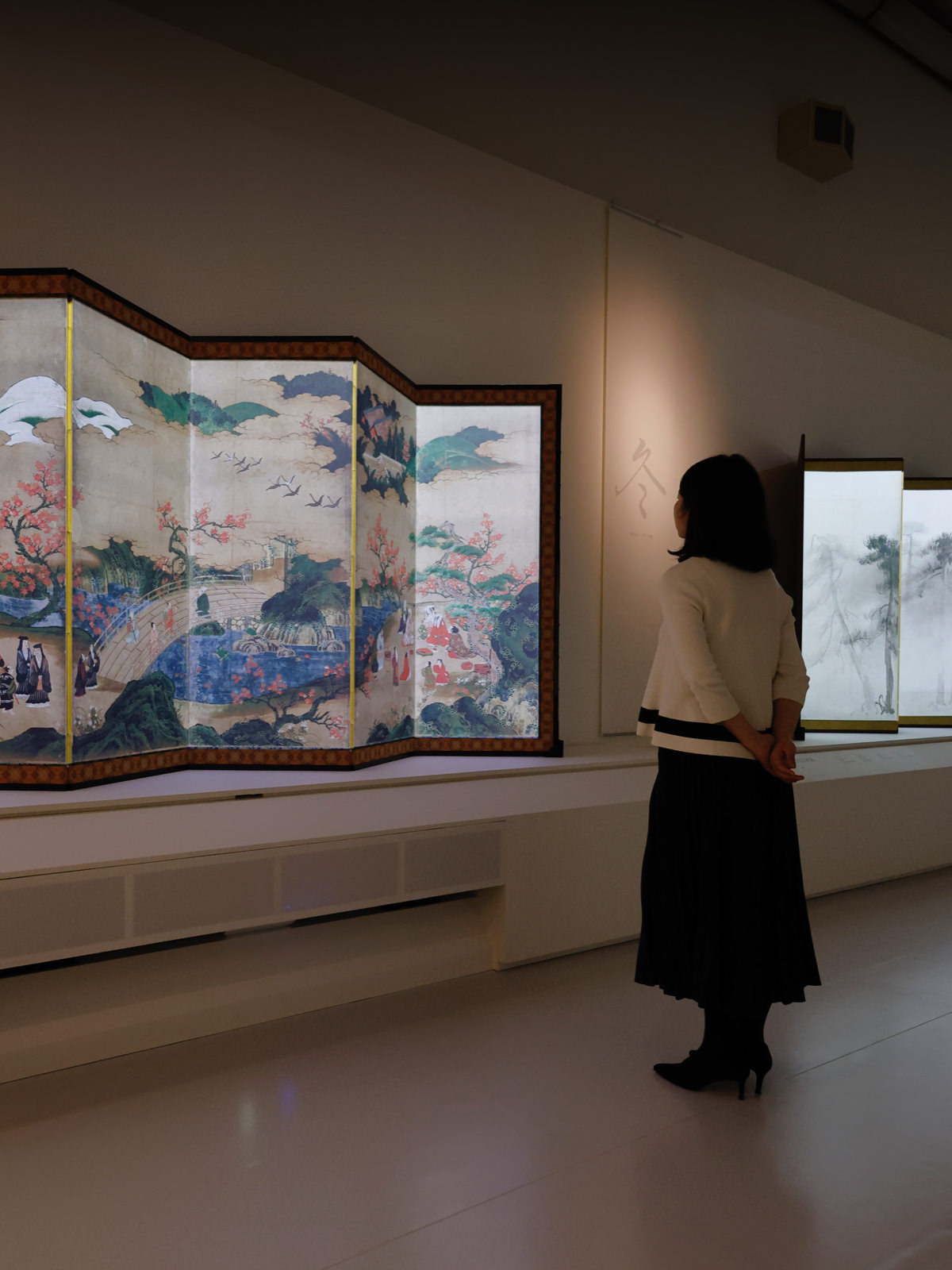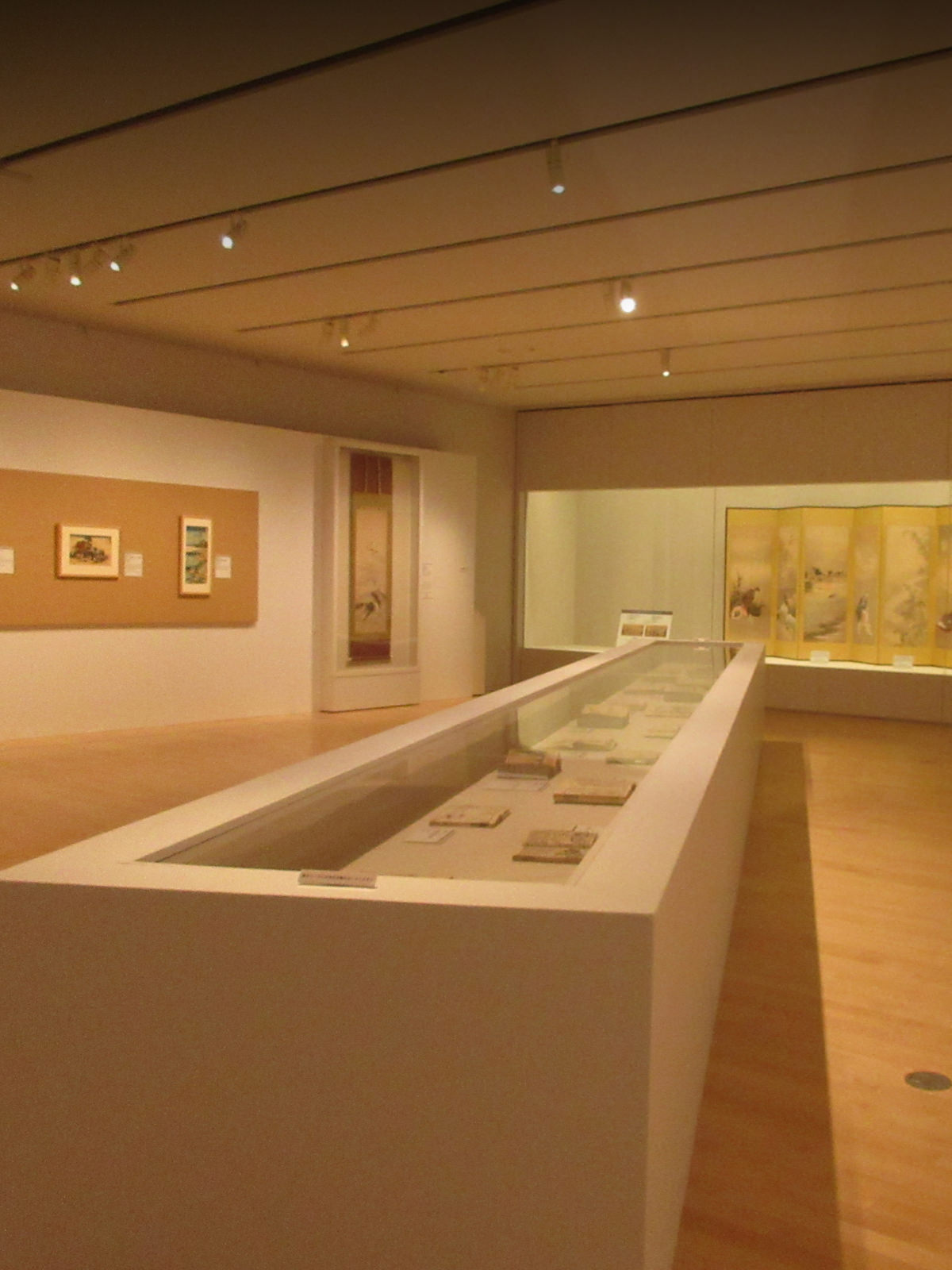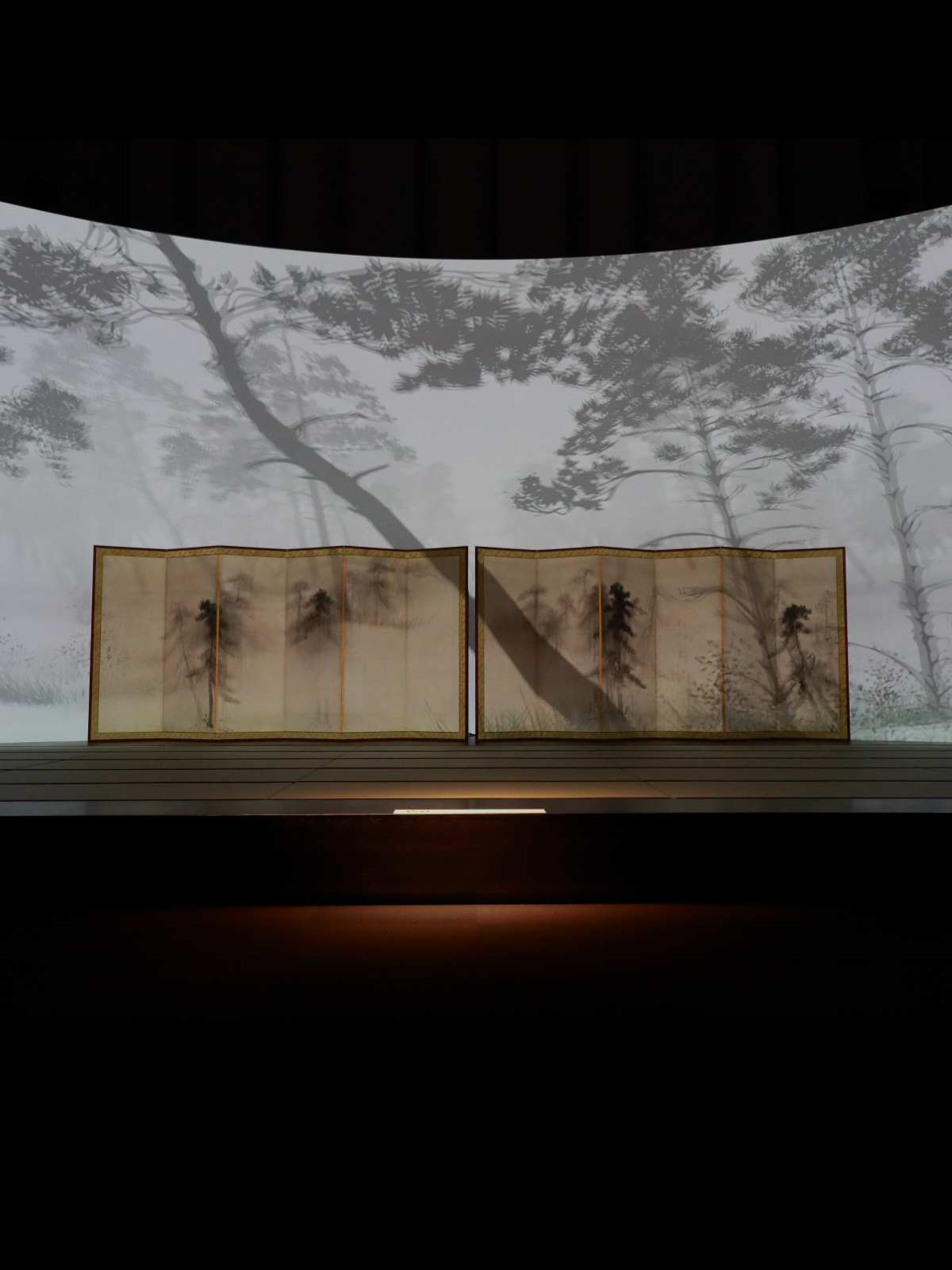
December 17, 2023
An experience that museums cannot offer.
Masterpieces from the Smithsonian’s National Museum of Asian Art on Special Display at Kennin-ji Temple in Kyoto
In the fall of 2023, as maple leaves were just starting to color at Kenninji Temple in Kyoto, bright red maple leaves announced the arrival of the season ahead of the trees. Behind the green maple leaves of Choontei Garden was “Maple leaves on a stream (front); mountain views (reverse)” by Ikeda Koson. The ultramarine river between golden clouds reflects vermilion maple leaves, unfolding a vivid world to the viewers.

“Masterpieces from Smithsonian’s National Museum of Asian Art” was presented at Kenninji Temple in Kyoto from October 13 to November 3, 2023. Nineteen pieces of high resolution facsimiles of works owned by the museum were displayed to the public at Kyoto’s oldest Zen Temple, Kenninji Temple. Many visitors from within and outside Japan enjoyed the exhibition that was quite different from the usual experience in museums, as they were able to appreciate the works in natural lighting reminiscent of the days when these works were painted and without the obstruction of glass cases.

This work is owned by Smithsonian’s National Museum of Asian Art, which is known for possessing a great number of Japanese artworks. In accordance with the will of Mr. Freer, the founder, many of the artworks in their possession are prohibited from being removed outside of the museum, meaning that one must visit the museum to appreciate them. The Tsuzuri Project has created a number of high resolution facsimiles of artworks possessed by the museum and enabled these works to come back to Japan.


“Dragon and Clouds” by Tawaraya Sotatsu, who is known as the father of the Rinpa School, is one of the few works of art recognized as an authentic painting by Sotatsu, and the only large-scale ink and water painting he ever made. The two dragons painted between clouds and waves continue to change their expressions in reflection of the soft light.


When you walk through the creaking corridor as if you went back in time to the Edo period, you find the graceful “Cranes” behind the sliding doors. This work was painted by Ogata Korin, who is said to have given a great impact not only within and outside Japan but also on the modern art world. This bold composition presents a grouping of black and white cranes extending to the left and right across a gold background, and the cranes are walking in a stylized manner toward the center of the folding screen. The stylized swirling waves at both ends of the screen create a unique sense of space.

“Breaking Waves” by Katsushika Hokusai rests in an alcove decorated with adorable children on a boat. This work evokes “The Great Wave off Kanagawa from Thirty-six Views of Mount Fuji,” a representative work by Hokusai. You can experience the waves of Hokusai only achieved by hand-painted works, such as the brushwork with different thicknesses and intensity levels as well as splashes expressed by the spattering of the white pigment.

“Landscapes, Flowers, and Trees of the Four Seasons” by Kano Motonobu sitting in the warm sunlight of early evening beaming through the leaves. Motonobu is known as the first painter in the Kano School to have combined the Chinese painting style and Japanese painting style. This work is imagined to reproduce a custom of that period, when groups of hanging scroll paintings were hung against richly decorative folding screens.


During the exhibition period, a gallery discussion by Dr. Frank Feltens, a Japan Foundation Associate Curator of Japanese Art of the museum, and a special night viewing as a collaboration project* with the magazine “Waraku” were held among other events. Participants were able to fully experience the works in detail while listening to the explanations on the background and key features of each work.
*Click here for the event report of the collaboration project with Waraku.
Visitors enjoyed the special experience that they would otherwise not be able to find in museums, as demonstrated by their comments: “I’m glad to have been able to see many amazing works that are not allowed to leave the museum.” “I know they were facsimiles, but I was impressed by the technology that made these works look so great that they could be mistaken for the originals.” “What a luxurious experience it was to be able to look at these paintings while feeling the sunlight and breeze in the graceful building of Kenninji Temple.” “It felt like I went back in time.”
*In order to view videos, it is necessary to consent to the use of cookies by our website.
If the videos are not displayed, please click the “Cookie Settings” and accept cookies.
*Japanese subtitles only
Event information
Masterpieces from Smithsonian’s National Museum of Asian Art
- Period
- October 13 (Fri) to November 3 (Fri/national holiday), 2023
- Venue
- Main Building, Kenninji Temple
- Hosted by
- NPO Kyoto Culture Association, Canon Inc.
- Co-organizer
- Smithsonian’s National Museum of Asian Art
- Special support
- Kenninji Temple








